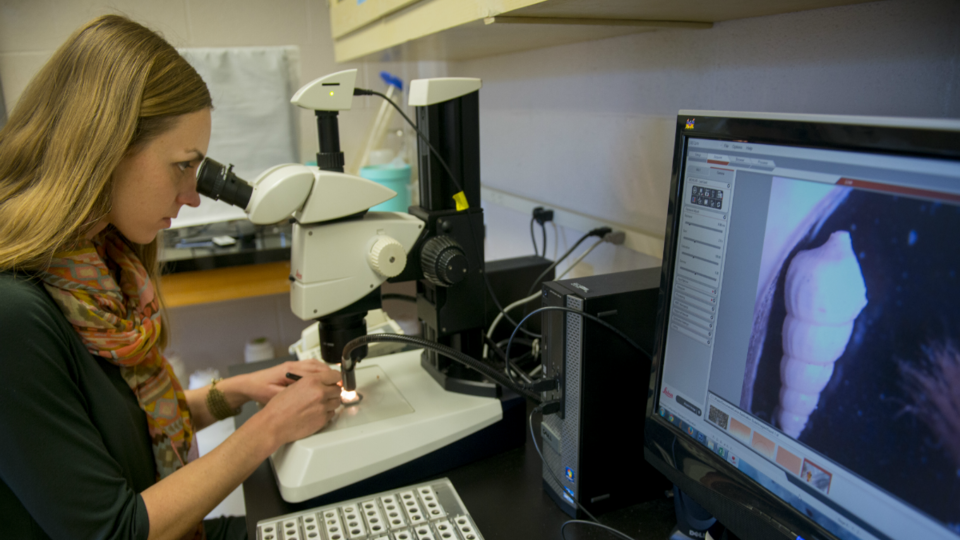Climate Change - The long-lasting effects on sea life
A new study reports that ocean life can take thousands of years to recover from climate change.

The team, led by Dr Sarah Moffitt, examined more than 5,400 fossils, from sea urchins to clams, found in a 30 metre sediment core from the ocean floor off Santa Barbara, California.
The tube-like sediment core is a slice of ocean life as it existed between 3,400 and 16,100 years ago.

An example of an ocean sediment core.
It provides a snapshot of what happened during the last major deglaciation.
It was a time of abrupt climate warming, melting polar ice caps, and expansion of low oxygen zones in the ocean.
The sediment core revealed a history of a well-oxygenated sea-floor full of life.
Then there was a period of oxygen loss and warming, that triggered a rapid collapse of life.

A typical view of the ocean floor
The study shows that the fossils nearly vanish in layers formed when oxygen levels in the sea dropped.
In periods of less than 100 years, ocean oxygen levels decreased significantly.
Quite small changes in oxygen in seawater can cause big changes for seafloor life.
The study results suggest that future periods of global climate change may result in similar effects, with life taking thousands of years to recover.
"It’s not just about temperature," says Sarah Moffitt.

Dr Moffitt examining a fossil marine gastropod (sea-snail)
"It’s about disrupting fundamental earth processes that we as humans have understood to be very stable. They’re not stable."
"These systems have the capacity to be very unstable when you poke the climate system with a sharp stick."
The team, led by Dr Sarah Moffitt, examined more than 5,400 fossils, from sea urchins to clams, found in a 30 metre sediment core from the ocean floor off Santa Barbara, California.
The tube-like sediment core is a slice of ocean life as it existed between 3,400 and 16,100 years ago.
An example of an ocean sediment core.
It provides a snapshot of what happened during the last major deglaciation.
It was a time of abrupt climate warming, melting polar ice caps, and expansion of low oxygen zones in the ocean.
The sediment core revealed a history of a well-oxygenated sea-floor full of life.
Then there was a period of oxygen loss and warming, that triggered a rapid collapse of life.
A typical view of the ocean floor
The study shows that the fossils nearly vanish in layers formed when oxygen levels in the sea dropped.
In periods of less than 100 years, ocean oxygen levels decreased significantly.
Quite small changes in oxygen in seawater can cause big changes for seafloor life.
The study results suggest that future periods of global climate change may result in similar effects, with life taking thousands of years to recover.
"It’s not just about temperature," says Sarah Moffitt.

Dr Moffitt examining a fossil marine gastropod (sea-snail)
"It’s about disrupting fundamental earth processes that we as humans have understood to be very stable. They’re not stable."
"These systems have the capacity to be very unstable when you poke the climate system with a sharp stick."